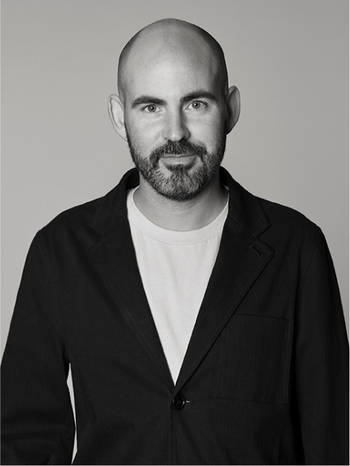Axel Einar Hjorth
a rare sofa, "Blidö", Nordiska Kompaniet 1929.
Pine, lacquered in brown, turned details, cord back, upholstered seat covered in textile, loose cushions, maker's mark AB Nordiska Kompaniet R 32959 C 7 9 28, height 89 cm, seat height 43 cm, length 187 cm.
Damages and wear.
Provenance
Designer Ralph Lysell and Bell Calmeyer, thence by descent.
More information
Ralph Lysell and Bell Calmeyer met in the USA in the 1920s, they married in 1926. In 1928 the couple moved to Stockholm to settle down. Ralph went to Nordiska Kompaniet and bought the "Blidö" furniture there, which has been in the family's possession ever since, via his son Rolf and his children. According to family legend, it was made for Ivar Kreuger, but he rejected it because it was too "delicious". After Ralph and Bell separated around 1930, Bell was informed that the furniture was unpaid and an installment agreement for the furniture was made up between Bell and NK. The debt of 1212.35 was to be paid off with SEK 75/month.
Ralph Lysell (1907-1987) Designer and industrial designer. Ralph was formerly called Rolf Åke Nystedt, but began to call himself Ralph over the years in the United States. He later changed to his mother's surname Lysell and eventually also officially changed his first name to Ralph. Ralph is best known as one of the designers behind the now iconic "Ericophone", also called the "Cobra Telephone".
Bell Calmeyer Callin (1899-1986) Midwife. Bell's name was Bergljot, a name she disliked very much and she changed to Bell, probably already during her studies in Scotland.
The son, Rolf Gösta Calmeyer (1927-2022) Artist. Born Nystedt and later called himself Nystedt Lysell to finally take his mother's maiden name Calmeyer.
Designer
Axel Einar Hjorth is considered one of Sweden's most significant furniture designers during the 1920s and 30s. Hjorth's early employers included Svenska Möbelfabrikerna in Bodafors and the Stockholm Crafts Association. The big breakthrough came as chief architect for Nordiska Kompaniet, a position he took up in 1927 and held until 1938. Hjorth's first major assignment was the Nordiska Kompaniet's lavish stand at the World Exhibition in Barcelona in 1929, to then participate in several major international exhibitions during the following decade. In 1929, Hjorth also breaks new ground and designs the first series of rustic furniture in stained pine, the so-called sports cabin furniture that was named "Lovö", "Utö" and "Sandhamn" after the islands in the Stockholm archipelago.
Read more






































































